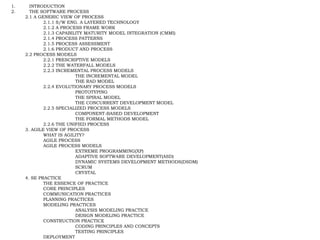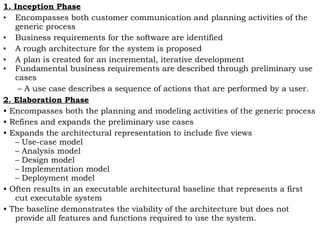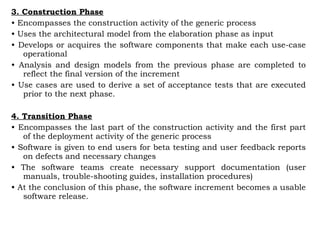1. The document discusses various software development process models including prescriptive models like waterfall and incremental development. It also covers evolutionary models like prototyping, spiral development and concurrent development.
2. Specialized process models for component-based development and formal methods are described. The unified process framework is also introduced as a iterative and incremental object-oriented development approach.
3. Key aspects of various process models like waterfall, spiral development and unified process are summarized, including their phases and characteristics.





















